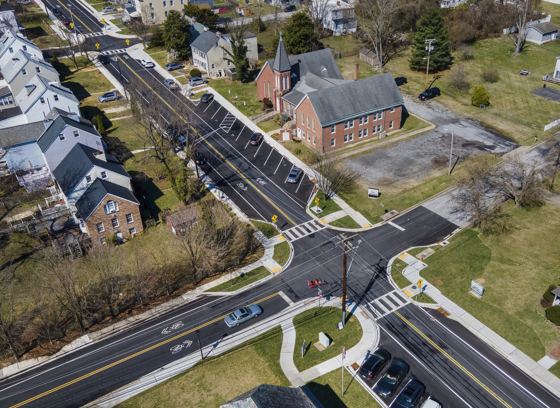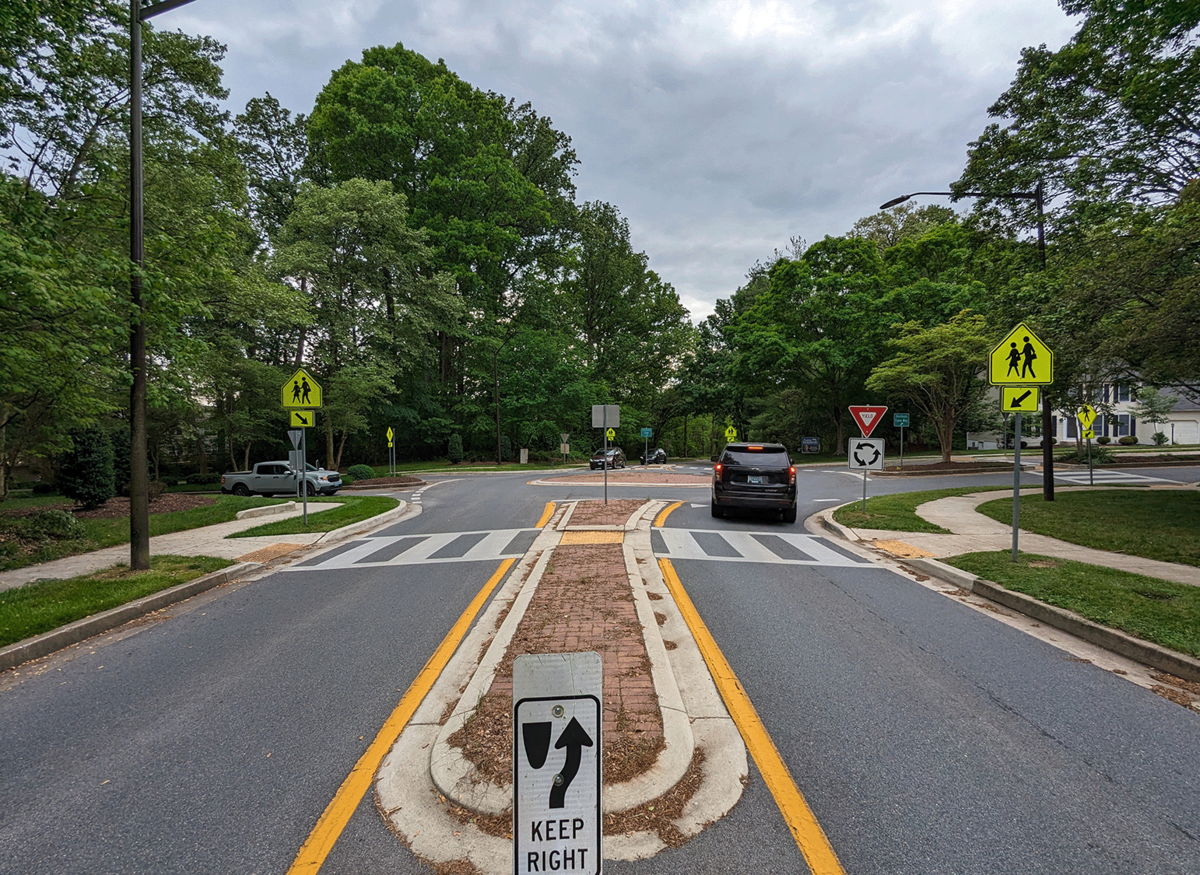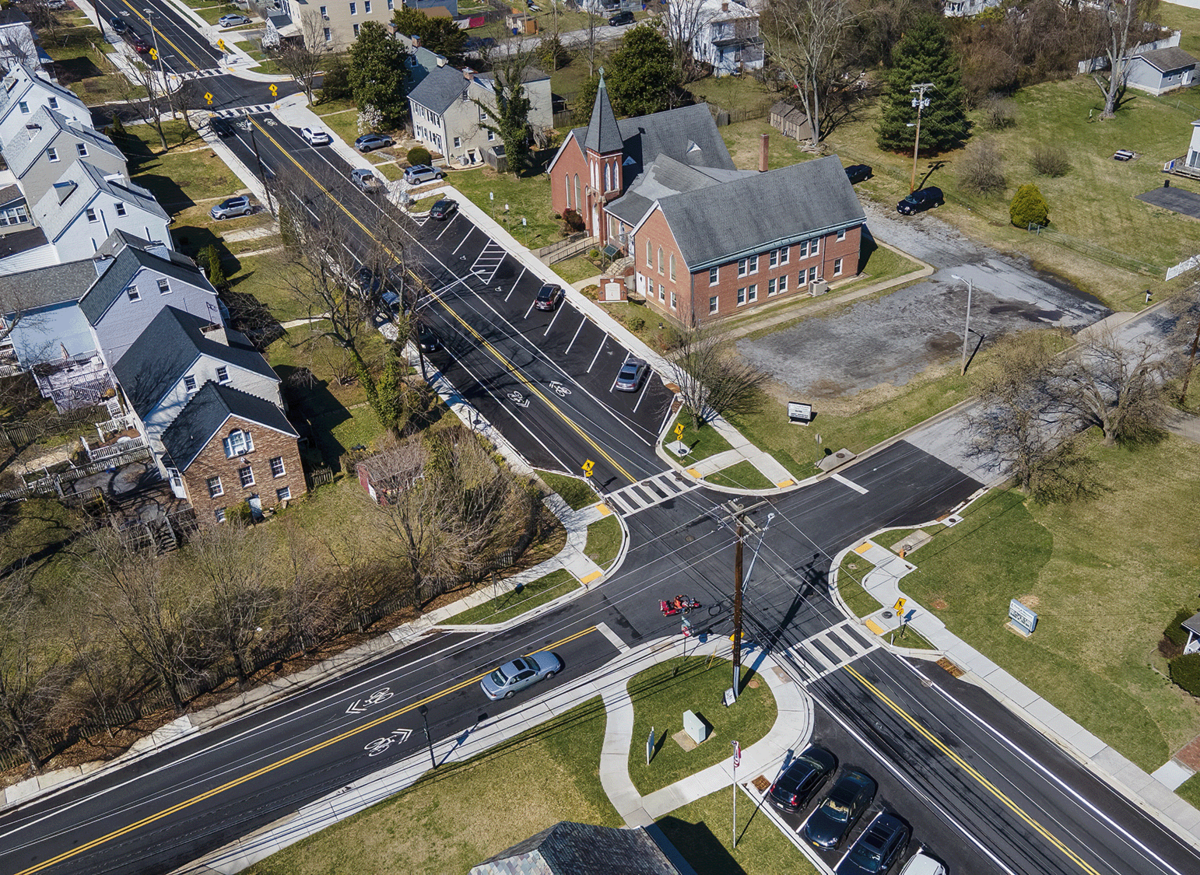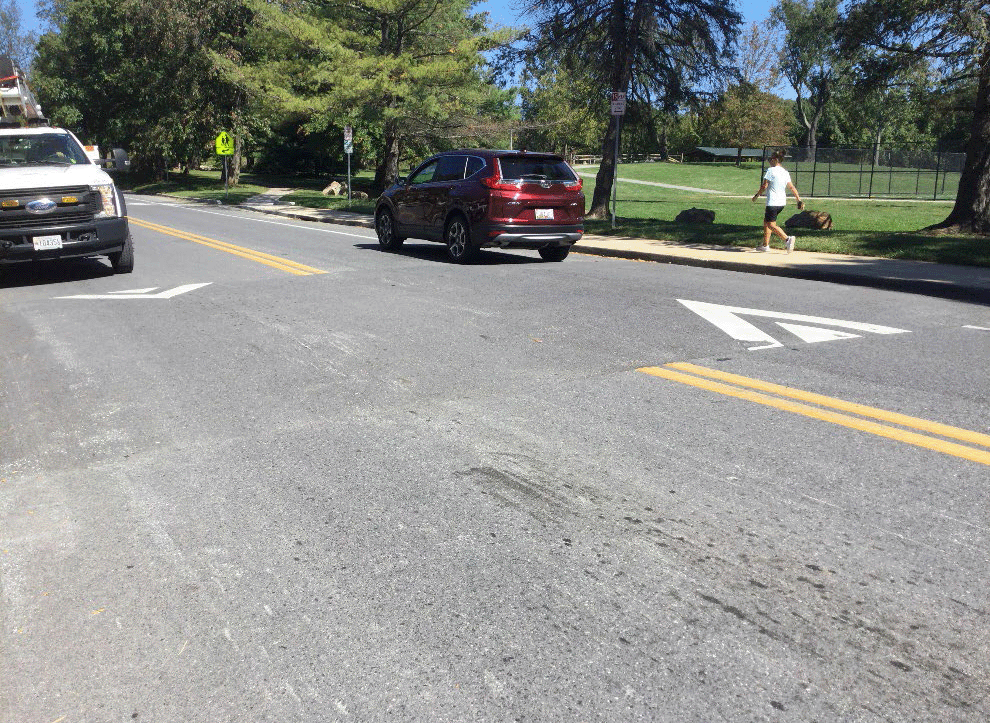About
Resident concerns related to excessive vehicular speeds continue to be a major issue along Howard County’s residential roadways. In an effort to address these concerns and support Howard County’s Strategic Road Safety Plan, Department of Public Works (DPW), in cooperation with Howard County’s Police Department, Department of Fire and Rescue Services, Office of Transportation, and the Howard County Public School System, has updated their Traffic Calming Policy to combat excessive vehicular speeds.

Neighborhood Traffic Calming Policy
The Howard County Neighborhood Traffic Calming Policy was updated in 2024. The policy covers roads that are owned and maintained by Howard County Government. The entire policy – including details regarding which roads are eligible, how requests are evaluated and prioritized, community engagement, and implementation – can be found below.
Active Projects
Hanover Road
Open House
Community Open House was held on October 29, 2024.
Frequently Asked Questions
-
How do I request sidewalks on Hanover Rd?
- New or connecting sidewalk capital projects are under the purview of the Howard County Department of Public Works – Bureau of Engineering, Transportation Special Projects (TS&P). Please contact the Bureau of Engineering at (410) 313-2014 for inquiries regarding new sidewalk construction projects.
- How do I request Speed Cameras on Hanover Road?
- As noted on the Howard County Police Department’s “Automated Speed Enforcement Program” page, Council Bill 13-2011 only authorizes the use of speed monitoring systems in school zones within Howard County.
- How do I request all-way stop signs at intersections?
- When considering the possibility of a Multi-Way Stop at a given location, we are required to follow the guidelines set forth in the Manual of Uniform Traffic Control Devices (MUTCD). The MUTCD, a Federal Highway Administration document that is used nationally and adopted by Maryland and its jurisdictions, outlines minimum requirements to ensure that Multi-Way Stop conditions are used where they are found to be justified through a comprehensive and objective analysis.
Federal Multi-Way Stop Warrant Analysis were performed in Spring 2024 at the intersections of Hanover Road at Winters Lane/Hanover Crossing Way and Hanover Road at Fairbourne Court/Taylor Acres Road. Neither location was found to meet the federal warranting thresholds.
- When considering the possibility of a Multi-Way Stop at a given location, we are required to follow the guidelines set forth in the Manual of Uniform Traffic Control Devices (MUTCD). The MUTCD, a Federal Highway Administration document that is used nationally and adopted by Maryland and its jurisdictions, outlines minimum requirements to ensure that Multi-Way Stop conditions are used where they are found to be justified through a comprehensive and objective analysis.
- Can rumble strips be added along Hanover Road?
- Rumble strips are not installed on residential/residential adjacent roadways due to sound intrusion into residences.
- Can trucks be banned from using Hanover Road?
- Existing commercial truck restriction signs are posted on High Tech Road and Old Washington Road approaches to Hanover Road. The existing signage will be evaluated for visibility. Elimination of truck access altogether is not legal under Maryland Vehicle Law. There are businesses along Race Road that commercial trucks must access by these roadways and are allowed to under the law.
- Enforce the speed limit/reduce the posted speed limit on Hanover Road.
- The Howard County Code (Section 21.311.3) allows for the DPW to lower the minimum speed permitted by state law on roadways (30 MPH) to, but not less than 25 MPH. Please submit your requests for traffic enforcement to the Howard County Police through the public portal.
- There are not enough speed humps proposed. Request evaluation on southern/eastern end of Hanover Road.
- Evaluating the entire roadway, it was found that many portions of roadway were too steep for traffic humps (equal to or greater than a 6% grade). Vertical deflection is inappropriate for steeper than 6% grades and where sufficient sight-distance is not available.
Furnace Avenue
Open House
Community Open House was held on October 29, 2024.
Frequently Asked Questions
- How do I request sidewalks on Furnace Ave?
- New or connecting sidewalk capital projects are under the purview of the Howard County Department of Public Works – Bureau of Engineering, Transportation Special Projects (TS&P). Please contact the Bureau of Engineering at (410) 313-2014 for inquiries regarding new sidewalk construction projects.
- Can rumble strips be added closer to Miami Court?
- Rumble strips are not installed on residential/residential adjacent roadways due to sound intrusion into residences.
- Please consider an additional speed hump closer to Miami Ct.
- Speed humps should be a minimum of 200-ft from an intersection of public roadways. Further discussion and evaluation are to be made with requestors.
- Enforce the parking restriction in front of Riverwatch Apartments.
- Please submit your requests for traffic enforcement to the Howard County Police through the public portal.
Phelps Luck Drive
Open House
Community Open House was held on February 27, 2025.
High Tor Hill
Frequently Asked Questions
How do I apply for a traffic calming evaluation on my street?
An individual, or an individual representing the community may make a request for traffic calming evaluation by submitting an electronic application via the link below, or by printing the application and mailing to DPW – Bureau of Highways – Traffic Engineering Division, 7125 Riverwood Drive, Suite B, Columbia MD 21046.
The Traffic Calming Evaluation application does not include an option for me to select a specific speed calming measure. How do I request speed humps?
Traffic calming measures generally have features associated with horizontal deflection, vertical deflection or geometrical modification, and not all devices are appropriate for every roadway. Selection of a traffic calming treatment on eligible streets will be determined by Public Works through a technical evaluation.
What traffic calming measures are there, besides speed humps?
Traffic calming measures generally have features associated with horizontal deflection, vertical deflection or geometrical modification. The menu of options for traffic calming measures can be found on pages 2-29 to 2-44 of the Howard County Design Manual, Volume III.
What factors are considered to determine eligibility for traffic calming on a neighborhood street?
The following factors are taken into consideration:
- Traffic Volume
- Speed
- Crash History
- Street Characteristics
- Proximity to People Generators
- Equity Emphasis Area
Screening and scoring methodology may be found in Appendix B of the Neighborhood Traffic Calming Policy.
Is there a community vote for implementation of traffic calming measures on eligible roadways?
No.
No funding is required from the applicants and/or the neighborhood. This traffic calming process is annually funded under Howard County DPW Capital Project T7106 – Intersection or Corridor Safety Improvements Project.
I’ve submitted an application for traffic calming evaluation on my street. Now what?
Step 1
- Community member or neighborhood organization submits neighborhood traffic calming application to DPW.
Step 2
- DPW completes data collection and scoring of all applications received for applicable County-owned and maintained roadways.
- If an application does not meet the minimum Transportation scoring threshold of 20 points – or total point scoring threshold of 40 points – the application does not move forward and traffic calming treatment is not installed.
Step 3
- Application meets the minimum total point scoring threshold of 40 points. The requestor(s) will be asked to provide five or more signatures from other households or businesses that show support for the application.
- If application is not ranked among top locations within available funding, DPW will consider the application for the following year. If the application is not selected in the second year, the application must be resubmitted to be considered for future years.
Step 4
- Public Works holds first community meeting to get more input from the neighborhood on their traffic safety concerns.
Step 5
- DPW completes technical evaluation and identifies recommended traffic calming treatments.
Step 6
- DPW will develop a concept design and tentative implementation timeline for each application. Design and construction time varies depending on complexity of the location.
Step 7
- DPW holds second community meeting to share data and recommend traffic calming treatment, tentative design, and implementation timeline.
Step 8
- DPW designs and implements recommended traffic calming treatment. After installation, DPW will confirm that the treatment is working as intended and may make adjustments to the installation if needed.
- New requests that have not been considered for Neighborhood Traffic Calming treatment within the last five years will be prioritized over locations that have previously been evaluated or had traffic calming installed within the last five years.
How is the community notified of upcoming project locations?
DPW will host a preliminary community meeting to get more input from the neighborhood on their traffic safety concerns. DPW will work with the individual, Homeowners Association, Civic Association, or representative group to promote information about the community meeting. Preliminary Community Meetings may be combined to include multiple locations within close local proximity.
Information gathered during the Preliminary Community Meeting, and all pertinent data from the feasibility analysis, will be used to develop a traffic calming plan for the location. The plan may consist of one or more options. DPW will host a second community meeting to share the proposed traffic calming plan with the community and to receive feedback. After public feedback is considered, projects will be advanced for construction.
How are eligible locations prioritized?
DPW will annually prioritize pending projects on a fiscal year basis by assigning points to each project. Projects will be scheduled for detailed design and implementation based on their point score and the capital improvement funds available for the fiscal year.
How will the community know when a project is scheduled to be implemented?
Prior to installation, DPW will communicate with the applicant and people who participated in community meetings on the timeline and details for traffic calming implementation. After installation, DPW will monitor installations and may adjust if necessary. If the installation is a pilot, Public Works will clearly communicate how long the pilot will be in place, how community members can share feedback on the pilot, and future steps for evaluation.


